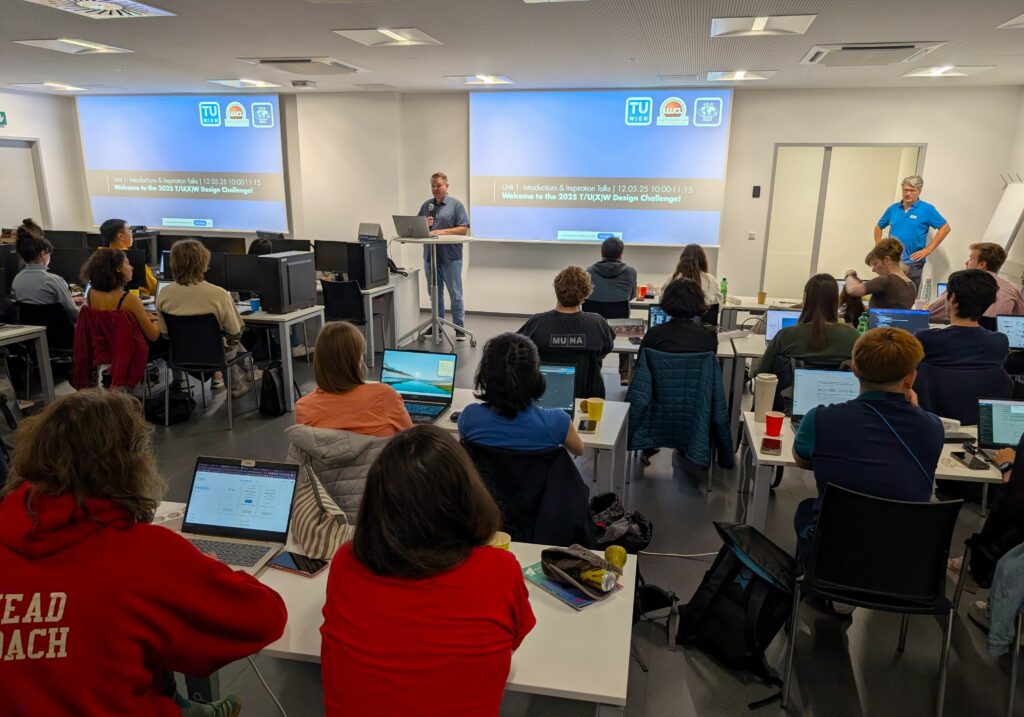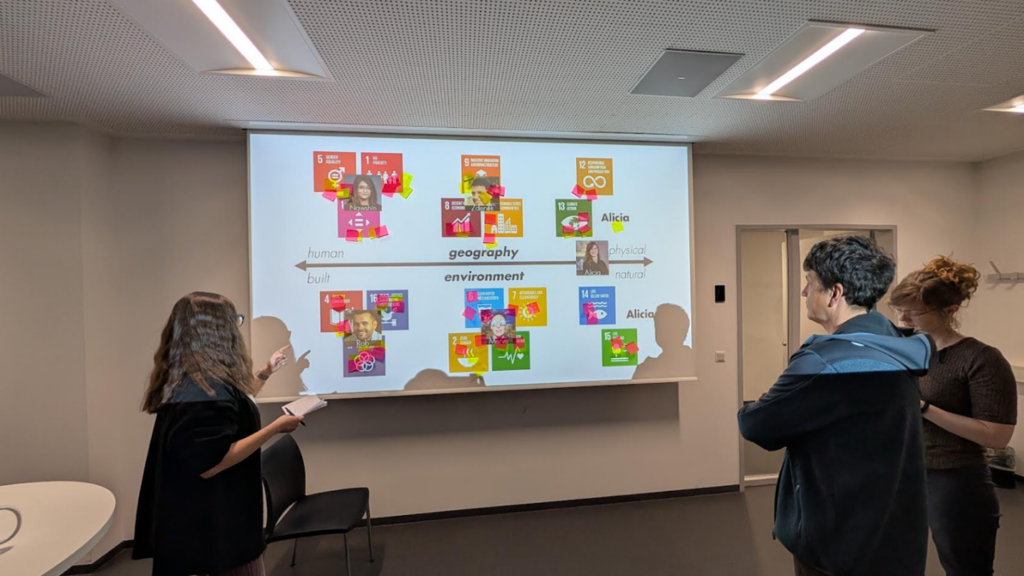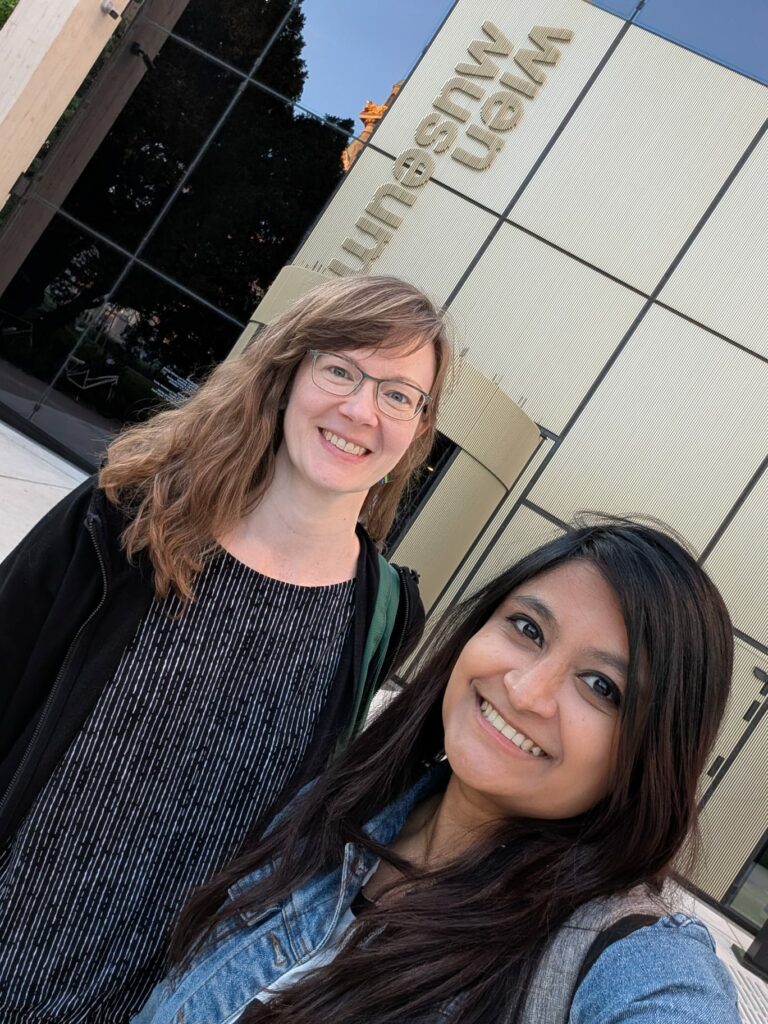For over a decade, the UW Cartography Lab has planned and hosted a yearly Design Challenge. Always a highlight of the department’s year, the Design Challenge is a lively day-long event that gives students, staff, faculty, and local community organizations time and space to collaborate and create together around a curated theme in a focused group setting.
Racial justice, K–5 geography curriculum development, hazardous waste trade, spacio-temporal fossil data, feminist mapping—over the years, the Design Challenge has thoroughly explored all of these topics and more.

For the 2025 Design Challenge, the Cartography Lab stepped onto an international stage, running an intense, week-long mapping workshop in beautiful Vienna, Austria. The 2025 Design Challenge built on the Cart Lab’s deep connections with the International Cartographic Association (the premier international congress for cartographic research and education) and the United Nations, which included a 2020 textbook publication Mapping for a Sustainable World published by the United Nations in which Cart Lab students designed all 227 original maps and figures.
The 2025 Design Challenge was a practical implementation of that textbook. A total of 38 student cartographers from 26 different countries participated in the event, hosted at Technische Universität Wien. Additional organizing partners included participants from the International Cartographic Association (ICA) Commissions on Sustainable Development and User Experience, the United Nations, the Erasmus Mundus MSc Cartography Programme, Masaryk University, and the University of Salzburg. Cartography Lab Director Robert Roth, Creative Director Alicia Cowart, and current graduate students Gareth Baldrica-Franklin and Nuzhat Tabassum Nawshin made the trip, with former undergraduate student Lily Houtman participating remotely.
Mapping Sustainability, Together

The participating 38 students formed groups of 2–3, based on their personal and professional interests in specific Sustainable Development Goals as defined by the UN. The organizers leaned into the diverse backgrounds and experiences of the international student group, encouraging each team to delve into the common ground they shared as well as the alternatives each student could see from their unique perspective.
Nuzhat Tabassum Nawshin said, “As a former student in the MSc Cartography program, returning to Vienna in a mentoring role felt full-circle. The energy in the room was contagious. Each group brought different backgrounds and complementary skills to the table—from GIS knowledge to artistic and cultural perspectives. It was impressive to see how quickly these small, diverse teams moved from an initial idea to a meaningful visual story. Helping them through sketching, critiquing, and refining, while hearing the lived experiences that shaped their design choices, was just as inspiring for me as it was for them.”
Seeing the Atlas come together made it all the more rewarding to be part of the Cart Lab’s first international Design Challenge.
Nuzhat Tabassum Nawshin, PhD Student
The end product was the exceptional Atlas of Sustainability—yes, you can click that link to read the whole thing!—a publication of the International Cartographic Association. It’s a compendium of 17 map spreads, each covering a different United Nations Sustainable Development Goal from a local or regional perspective. Each spread is accompanied with an artistic statement about the design thinking behind the map, providing a compelling story about the key challenges driving the maps’ purpose and the cartographers’ creative pathways to identifying spatial arguments for intervening with actionable solutions.
It’s a beautiful, fascinating read—and it’s also a case study in actionable cartography. The Atlas of Sustainability demonstrates that cartography is methodologically and technically capable of visualizing global goals, and that it can be agile and impactful within tight timeframes.
A Bright Future

For the Cartography Lab team, the work on this exciting project is just beginning. The ultimate goal is to develop and evaluate a model curriculum for running Sustainable Development Goal-related mapping workshops in a variety of international contexts from local to global, with the ICA partnering on future workshop events to maximize the power, potential, and relevance of maps for raising awareness and action.
To start, they’ll keep working to get the Atlas of Sustainability out into the world: fellow editor and ICA President Georg Gartner distributed printed copies at the 2025 United Nations Global Geospatial Information Management meeting in New York City in August.
Then, the Atlas editors plan to present the Design Challenge process and key take-home insights at the The First Cartography and Sustainable Development Workshop in Aruba in January 2026, as well as at EuroCarto 2026.



